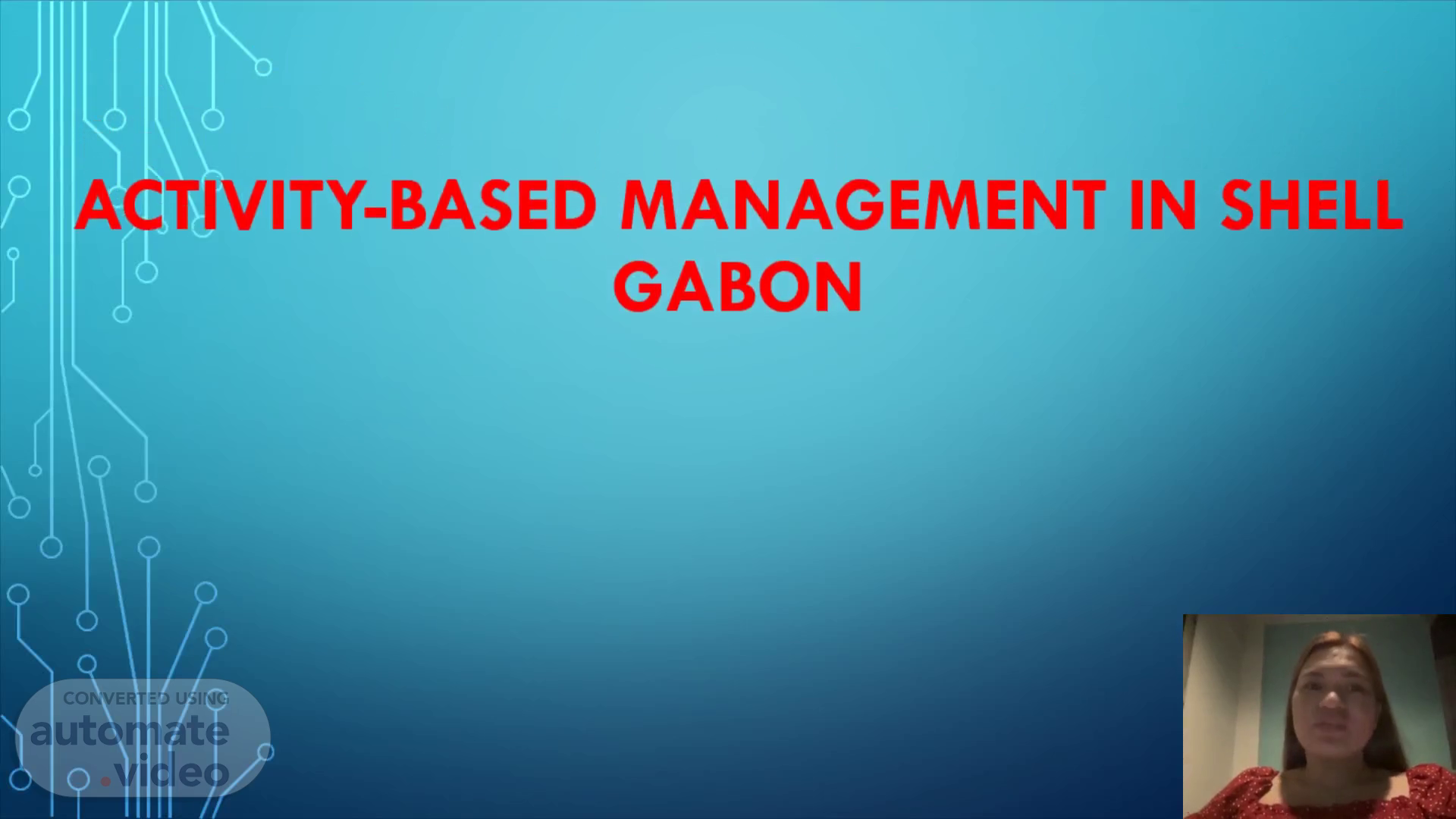
Page 1 (0s)
Activity-based MANAGEMENT in shell gabon. In Partial Fulfilment.
Page 2 (14s)
INTRODUCTION. Oil is one of the commodities that has been present in the market for a very long time, since the demand for the product will always be high. However, just like any other commodity, oil prices respond to supply conditions with wide price swings. In fact, during the late 90’s, oil companies experienced a decline in oil prices due to excess oil supply which in turn lead to a decrease in profits..
Page 3 (2m 47s)
Since the land-based oil reserves were largely depleted, SG needed capital development funds to expand off shore operations. RDS did not see the need to prioritize financing SG’s new capital expenditures. Accordingly, SG appointed a Cost Leadership Team (CLT) to be responsible in managing it costs and CLT studied the Business Management department because it had the highest amount of total costs compared to the others. The team is considering to apply Activity-Based Management in the department because it would be beneficial to the company. It has discovered that the department housed a number of diverse processes namely – provide goods and services, provide IT and telecommunications services, provide financial services, perform internal audits, prepare economic plans, market/trade hydrocarbons and provide legal services. Lastly, as the cost manager, the current costing system of the company as well as other factors were considered in determining concrete steps in resolving the issue UOC..
Page 4 (3m 59s)
Use of Benchmarking. Benchmarking provides the useful information when any company wants to compare itself in the industry. For example Royal Dutch Shell used industrial benchmark of $ 16.71 per barrel of oil in producing crude oil to maintain its costs below industrial average. This information allows the Royal Dutch Shell to see its current cost levels versus the industry average to identify what items incurs higher costs than others for further improvements. Other Industrial benchmarks can also be used for performance evaluation of each business process and unit..
Page 5 (5m 0s)
Using activity analysis and activity cost data for improvement.
Page 6 (5m 49s)
ACTIVITY-BASED MANAGEMENT INTRODUCTION.
Page 7 (6m 24s)
1.) Calculate the UOC per barrel for SG. Is a barrel of oil the cost driver for all the activities that go on within RDS? Comment on why RDS chooses to monitor costs per barrel..
Page 8 (6m 29s)
UOC = (Total Operating Expense – Exploration – Depreciation & Depletion) / Barrels Produced.
Page 9 (8m 29s)
2.) Analyze the costs in your department. What are the costs that are unique to your department? How do you think these costs should be treated in performing benchmarking of costs with other departments? Why?.
Page 10 (8m 42s)
ACCOUNTING COSTS.
Page 11 (9m 34s)
Rent. Utility expenses. Food and entertainment expenses. Travel expenses, including transportation and hotels. Payroll expenses, including salaries and related payroll taxes. Supplies. Insurance. Any other expenses incurred during the normal course of business..
Page 12 (9m 55s)
BENCHMARKING. The process of measuring key business metrics and practices and comparing them within business areas or against a competitor, industry peers, or other companies around the world to understand how and where the organization needs to change in order to improve performance..
Page 14 (12m 5s)
3.) As future managers, what Lasallian value is illustrated in this case? Elaborate and explain..
Page 15 (12m 8s)
ZEAL FOR SERVICE. a whole hearted giving of oneself to the service of others, in gratuity and generosity, in creativity and fortitude, in compassion and commitment..
Page 16 (12m 49s)
Reference :. Shahid Ansari and Jan Bell (2008, Dec, 4). General format . Retrieved from “Activity based management in shell Gabon” IMA educational case journal..